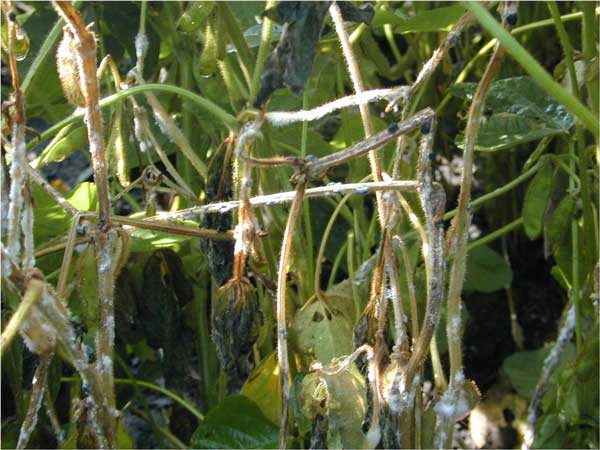Use a Good System to Fight White Mold
Mar 21, 2022

Getting the right system in place is becoming ever more important in crop production: the right nutrient management system, the right weed control system, and the right system for protecting your crop from disease.
White mold is the “disease of the day” in Federated’s service areas. It causes the most damage, from 50%-90% yield loss when environmental conditions are right and disease pressure is high. A proactive approach is the best way to fight white mold because reactive measures don’t work.
Craig Loen, Federated agronomist from the Osceola location, explained how the fungus works: The sclerotia fungus overwinters in the soil and can survive for several years; it flourishes in cool, wet soils. The sclerotia germinates in the top two inches of the soil and forms small mushroom-like structures called apothecia, which discharge airborne spores that are carried by the wind to the senescing petals of the flowers, which in turn causes the infection of the soybean plant. In the right conditions, the disease can prematurely shut down the entire plant.
Loen offered these recommendations for a systems approach to white mold:
Miravis® Neo, “a new plant health fungicide from Syngenta® is a good option,” Loen said. Applied with precision technology based on yield monitor reports can boost the effectiveness of the applications at 13.7 oz./ac. (for both the first and second applications).
Once soybeans are harvested this fall, consider applying Contans® on soybean stubble at a rate of 1-2 lb./ac. to limit the sclerotia in the future. Contans attacks organisms in the soil to help break the cycle of white mold.
Talk over your options with your Federated Agronomist to make the best decision for white mold disease pressure in your fields.
White mold is the “disease of the day” in Federated’s service areas. It causes the most damage, from 50%-90% yield loss when environmental conditions are right and disease pressure is high. A proactive approach is the best way to fight white mold because reactive measures don’t work.
Craig Loen, Federated agronomist from the Osceola location, explained how the fungus works: The sclerotia fungus overwinters in the soil and can survive for several years; it flourishes in cool, wet soils. The sclerotia germinates in the top two inches of the soil and forms small mushroom-like structures called apothecia, which discharge airborne spores that are carried by the wind to the senescing petals of the flowers, which in turn causes the infection of the soybean plant. In the right conditions, the disease can prematurely shut down the entire plant.
Loen offered these recommendations for a systems approach to white mold:
- Maintain a consistent corn-soybean rotation.
- Choose with a good soybean variety, one with strong white mold tolerance.
- Track the white mold populations year over year and use variable rate planting options to lower plant populations in areas with high disease pressure.
- Use wider row spacing to keep air flowing through the canopy and help lower sclerotia populations.
- Most importantly, apply fungicides on time. “Timing is critical,” said Loen.
- A two-pass fungicide application is the best management option with the first application at R1 (first flower) and the second application at R3 (full flower).
Miravis® Neo, “a new plant health fungicide from Syngenta® is a good option,” Loen said. Applied with precision technology based on yield monitor reports can boost the effectiveness of the applications at 13.7 oz./ac. (for both the first and second applications).
Once soybeans are harvested this fall, consider applying Contans® on soybean stubble at a rate of 1-2 lb./ac. to limit the sclerotia in the future. Contans attacks organisms in the soil to help break the cycle of white mold.
Talk over your options with your Federated Agronomist to make the best decision for white mold disease pressure in your fields.